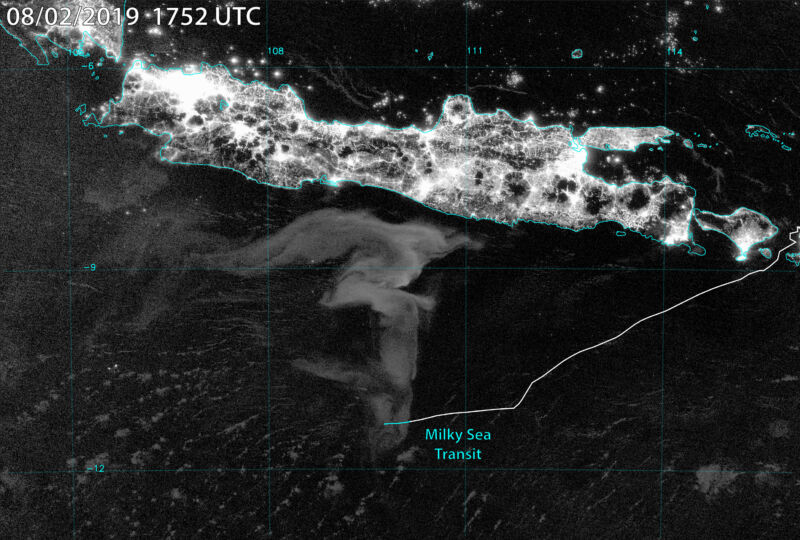Satellite images + lucky boat trip give new info on glowing “milky seas”

Enlarge / The boat trip went through an area of milky sea south of the lights of an island. (credit: Steven Miller, Leon Schommer, and Naomi McKinnon)
On some moonless nights, enormous patches of the Northwest Indian Ocean and seas around Indonesia begin to glow. This event has been witnessed by hundreds of sailors, but only one research vessel has ever, by pure chance, come across this bioluminescent phenomenon, known as milky seas. Thanks to that vessel, samples showed that the source of the light was a bacteria called V. harveyi, which had colonized a microalgae called Phaocystis. But that was back in 1988, and researchers have yet to be in the right place and the right time to catch one of these events again.
Both the bacteria and algae are common to those waters, so it's not clear what triggers these rare events. To help understand why milky seas form, researchers have gotten much better at spotting these swaths of bioluminescence from the skies. With the help of satellites, Stephen Miller, a professor of atmospheric science, has been collecting both images and eyewitness accounts of milky seas for nearly 20 years. Thanks to improvements in the imaging capabilities over the past decades, Miller published a compilation last year of probable milky seas in the time frame of 2012 to 2021, including one occurrence south of Java, Indonesia, in summer 2019.
But these satellite observations lacked surface confirmation-that is, until the crew of the yacht Ganesha reached out to Miller with their first-hand account of what they had experienced during their trip through the seas around Java that August, which was recently published in PNAS. Their eyewitness corroboration-along with the first photographs of a milky sea-show that these satellites are indeed a powerful tool for spotting these events.